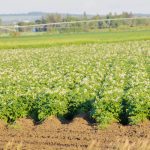Sustainability initiative | Organization that doled out ag research money may adopt water management mandate
An organization with the mandate to boost the economic fortunes of rural Manitoba will radically change at the end of March.
The Prairie Improvement Network, formerly known as the Manitoba Rural Adaptation Council, administered the province’s portion of the federal Canadian Agricultural Adaptation Program, which funded agricultural research projects.
That program officially comes to a close March 31, but PIN isn’t closing up shop. Its directors plan to reinvent the organization and are eyeing water management as a possible opportunity.
PIN is leading the Assiniboine River Basin initiative, an effort to bring together parties who have an interest in the sustainable management of the Qu’Appelle, Souris and Assiniboine river systems.
Read Also

Rented farmland jumps 3.4 million acres in Saskatchewan and Alberta
Farmland rented or leased in the two provinces went from 25.7 million acres in 2011 to 29.1 million in 2021, says Census of Agriculture data.
The organization planned to host a workshop March 26 in Virden, Man., to find out if municipal representatives, conservation organizations, academics and agricultural groups from Saskatchewan, North Dakota and Manitoba are willing to work together on an inter-jurisdictional project.
“What we’re asking at the workshop is very action orientated,” said Keystone Agricultural Producers vice-president Dan Mazier, who sits on the planning committee for the Assiniboine River Basin project.
“OK. What do you think of this kind of plan? Should we do this all apart … or continue on together? If they say together, what will that look like? And who should lead the charge?”
The Assiniboine River watershed includes most of the agricultural land in western Manitoba and much of southeastern Saskatchewan and northwestern North Dakota.
PIN chair Terry Fehr said the Assiniboine River Basin probably isn’t a familiar term in Saskatchewan.
“They don’t think of it as being the Assiniboine. They think of it as the Qu’Appelle and the Souris,” Fehr told the organization’s annual general meeting in Portage la Prairie, Man., March 20.
“(But) we’re making considerable effort to connect with people in both jurisdictions (North Dakota and Saskatchewan).”
The concept of a basin-wide water management strategy may have traction in Saskatchewan and North Dakota because millions of acres of farmland were flooded within the region during the spring of 2011.
Fehr said the public typically relies on government to provide answers on issues such as flooding and water quality, but provinces, states and municipalities often struggle with the complexities of water management.
“There are issues that government can’t deal with, whether they want to admit it or not,” he said.
“Some issues are just too hot, and I (think) water is one of them.”
Given PIN’s well-connected board, leaders believe it could provide leadership on water and sustainable resource management on the Prairies.
“Sustainability is sometimes an overused word these days, but no question, that’s a spot where we want to be operating.… We’re sticking our toe in the water, so to speak,” said PIN director Allan Preston, who is also a former assistant deputy agriculture minister in Manitoba.
“I’ve seen some changes to the landscape that have come about due to the intensification of agriculture that don’t sit well with me. Through this organization we’re not going to reverse some of those trends, but we’re going to keep people accountable to the fact that there is an environment and a social side to what we’re doing on the landscape.”
The Red River Basin Commission, which has existed in some form for three decades, has demonstrated it is possible for multiple jurisdictions to co-operate on water.
It comprises representatives from Manitoba, North Dakota, Minnesota and South Dakota, who collaborate to manage flooding, water quantity, water quality and stewardship across the watershed.
Lance Yohe, a former executive director of the commission, said the model isn’t perfect, but it is a voice that represents the entire watershed.
People in Saskatchewan, North Dakota and Manitoba need to collaborate and take ownership of the issue if they want to maintain the Assiniboine, Souris and Qu’Appelle river watersheds for future generations, he added.
“People within the basin have to find solutions,” Yohe said.
“Nobody is going to solve the problems for you. (You) have to step up.”















